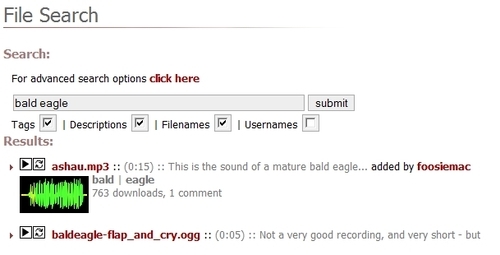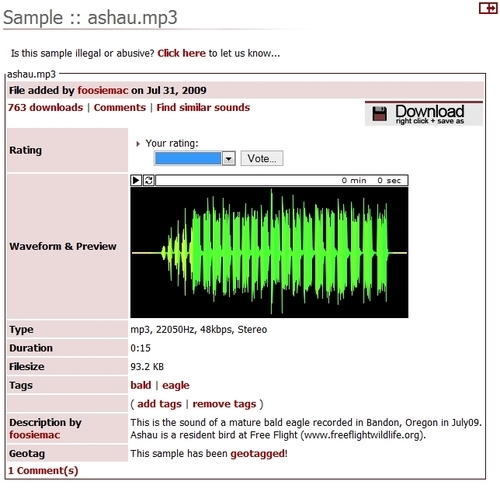It is time we paid attention to the free sound available on the Web that can be useful to enhance our podcasts. A useful website where you can find a wide variety of sound is http://www.freesound.org/. The Freesound Project website offers sound with a Creative Commons License. It only contains sound; you won't find any songs because most of them are protected by copyright.
Visit the aforementioned website and click on Join because it is necessary to register in order to download its files. Both the registration and access to its content are free of cost. Therefore, on the left-hand margin, click on Join / Register and complete the necessary information. Bear in mind that this website does not work with Hotmail accounts because of problems with the said service. Therefore, log in with another e-mail provider, for example Gmail or Yahoo!. This information is shown in the following screenshot:

Search for files to work with, find some sounds related to some countries or sounds of the nature and mention where we can find them. We can accept a great variety of answers, or just design a guessing activity with sound clues. Thus, focus on one country and add as many sounds as possible for students to guess which country we are describing through the sound. Follow these steps to find some sound files:
- Click on Search under Search / Browse on the left-hand margin.
- Activate the Filenames checkbox so that the website searches for the filenames of its sound files database.
- Enter the sound that you want to look for and click on Submit.
- Click the Play button and listen to the recorded sound, as shown in the following screenshot:

- After listening to the results, click on the file that suits you. A new page with more detailed information appears, as shown in the following screenshot:

- After checking the license information of the chosen file, right-click on the Download icon. The context menu appears; click on Save Target As, as shown in the following screenshot:

- Name and save the file.
- If you want to download other sounds, repeat steps 1-7.
We can enhance any type of activity using sound. In this case, add a Chat to our course in which students are to discuss which country we are describing through the sounds. Upload it to our Moodle course, as we have already done so before. Just click on the Moodle Media icon and upload the file as we did in the first recipe.
If we want to create a podcast in which we combine the sounds that we have downloaded with our voice, we can do it using Audacity software, as we did in the previous recipes. In the case that the file that we have chosen in the previous website is not an .mp3, we can convert it as we did in the previous recipe using Audacity as well.
